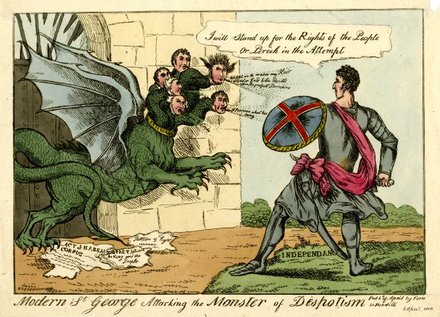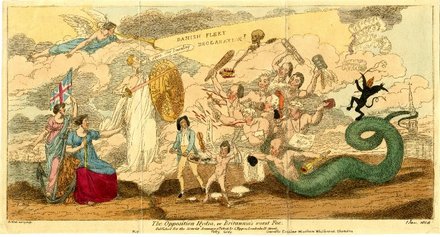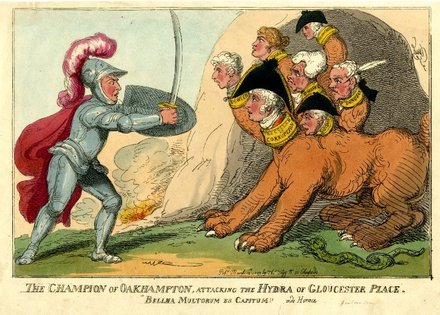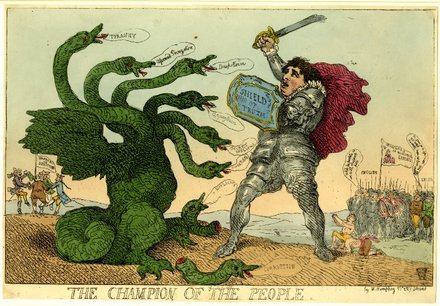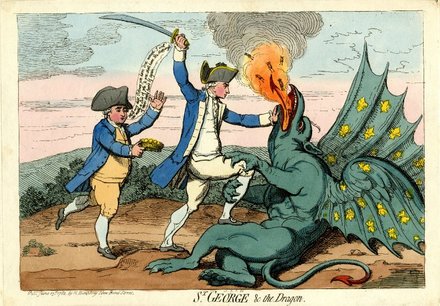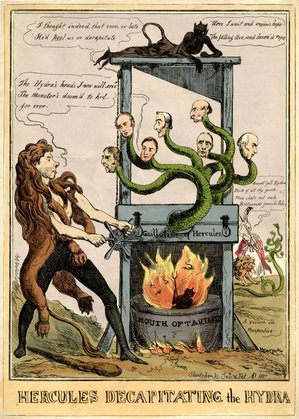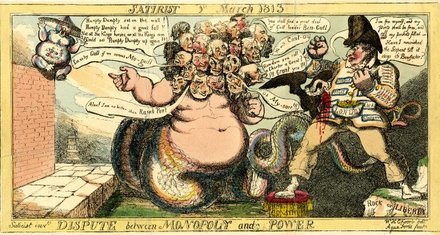William Heath (1794/95-1840), Modern St George Attacking the Monster of Despotism, April 6, 1810. Graphic Arts Collection British Caricature
When William Heath published a satire on Sir Francis Burdett’s opposition to Gale Jones’s imprisonment, Heath represented Spencer Perceval and his associates as a hydra or monster with multiple heads. It is a strong visual image but Heath was of course not the first to use the device. Knowing who he stole it from is complicated since the caricaturists borrowed and stole their parodies quite freely.
Surely Heath was reading Samuel Tipper’s magazine The Satirist or Monthly Meteor, in which Samuel De Wilde presented another variation of the scene in The Opposition Hydra, or Brittania’s Worst Foe. This might be the most immediate inspiration for Heath.
Or perhaps it Thomas Rowlandson’s The Champion of Oakhampton, Attacking the Hydra of Gloucester Place, published on March 15 1809? Especially with the subtitle he added from Horace’s Epistles, “Bellva Multorum es Capitum!!” (Thou Art the Beast of Many Heads).
And what about Rowlandson’s 1784 print, The Champion of the People, in combination with James Gillray’s St. George & the Dragon two years earlier?
It’s hard to say.
Here are a few others.
William Henry Brooke, Dispute between Monopoly and Power, 1813. Published in The Satirist 1st March 1813. Graphic Arts Collection (GA) Cruik 1808
